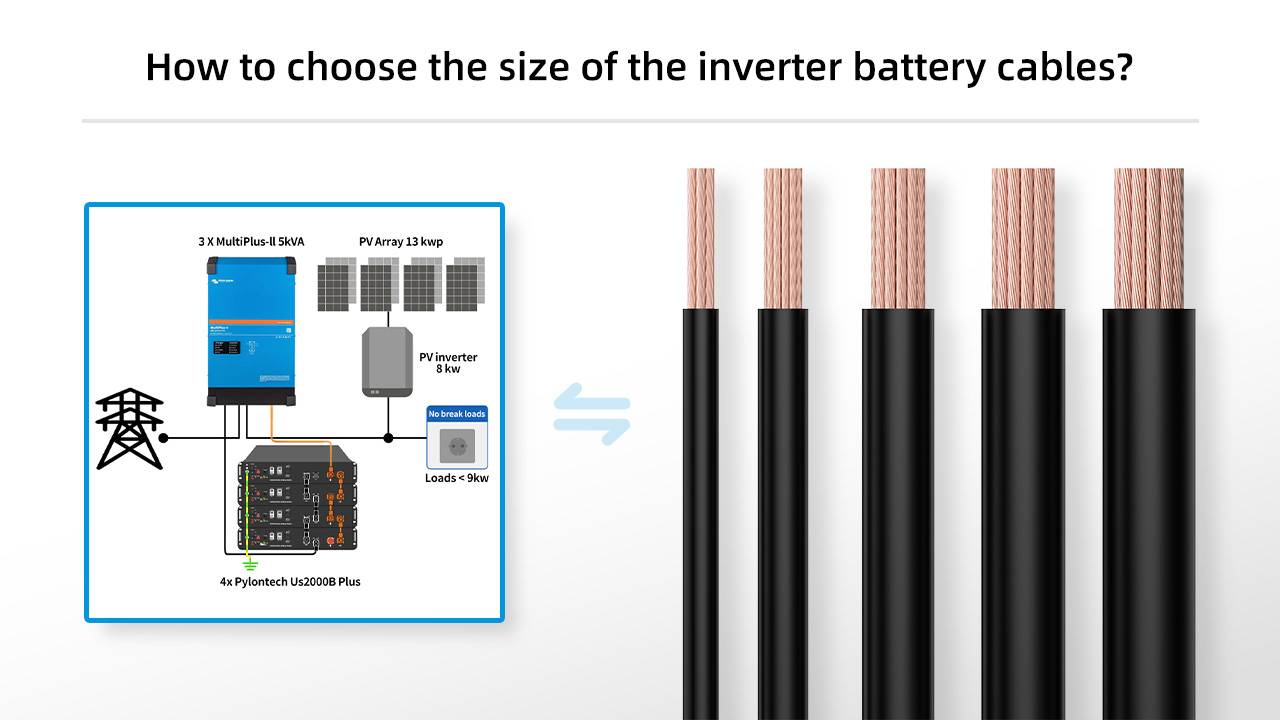 Inverter battery Cable selection and sizing is critical in building a reliable power system, especially from the battery to the inverter. Correct selection of cable sizing ensures efficient energy transfer, reduces energy losses and maximises system stability. Therefore, this paper will look at how to correctly size the cable from the battery to the inverter to ensure system reliability and performance.
Inverter battery Cable selection and sizing is critical in building a reliable power system, especially from the battery to the inverter. Correct selection of cable sizing ensures efficient energy transfer, reduces energy losses and maximises system stability. Therefore, this paper will look at how to correctly size the cable from the battery to the inverter to ensure system reliability and performance.
1.Understand the load requirements:
Before choosing a cable size, you first need to understand the load requirements of the load to which the inverter will be connected. Load requirements include current and voltage requirements, which will have a direct impact on the size of inverter battery cables required.
2.Consider current capacity:
Inverters convert DC energy into AC energy and therefore have to handle a considerable amount of current. Depending on the load current, select a cable large enough to prevent overheating and energy loss.
3.Cable length and resistance:
Cable length and resistance are important factors in the efficiency of energy transfer. Longer cables and higher resistance result in increased power losses, so cables that are thick enough to compensate for these losses need to be selected.
4.Consider environmental factors:
Cables will operate in a variety of environmental conditions, including temperature, humidity and possible mechanical stress. Select cables with sufficient insulation and durability to cope with different environmental factors.
5.Refer to standards and codes:
Select inverter battery cables that meet the requirements according to local electrical standards and codes. These standards often include detailed information on cable size, electrical characteristics and safety.
6.Conservative design:
A conservative design approach is recommended during cable sizing. Select slightly larger cable sizes to ensure that the system will still function properly in the event of load changes or future upgrades.
7.Have a professional make an assessment:
If you are unsure about your inverter battery cables size selection, it is recommended to have a power system professional evaluate it. They can consider all aspects of the system and advise you on the best cable size.
In summary, cable sizing from the battery to the inverter is an important step in ensuring the efficient operation of your power system. By carefully considering load requirements, current capacity, cable length and environmental factors, as well as referring to relevant standards and codes, you can ensure that the right cable size is selected to improve system reliability and performance.





